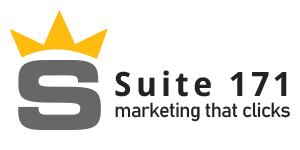Analyzing the effectiveness of your website
Analyzing the effectiveness of your website.
The biggest question website owners are faced with is: Does my website work? The first thing I tell my clients is to define what “work” means to them. Usually, then they say that a high number of clicks is their definition of a website that “works”. Now I ask them to think a little more out of the box. What if a site receives 100K clicks but no new business, does that site work? Traffic alone is not an accurate measure of whether or not a website is working.
Look at Business A as a case study. Business A is a type of medical facility. As a medical facility, they need clients to be able to come into their location for service. Business A is also located in a town of about 75,000 people. Getting 100K clicks per month on their website is an unrealistic goal for Business A due to the simple fact that there isn’t even 100K people in their town. And if 100K people suddenly wanted to be their customer, they wouldn’t have the ability to service them all. A more realistic goal for Business A would be to find a “number of new clients” goal and to target their online efforts accordingly.
Business B, on the other hand is a completely web based business. They have a number of products that they sell completely online through their website. Their products are shipped anywhere in the country and require a high volume of sales each month. This type of business needs a lot of traffic to reach their sales goals, so in this case, the volume of clicks counts.
How many new clients do you expect from your site? Do you expect all of your business to come from the web? Do you need clients to physically come into your brick-and-mortar store? Do you have a territory that you cater to? All of these questions help determine what your website’s role in your business could be or should be.
Search Engine Placement
In any business’s website situation, search engine placement is a large player in getting the type of results that move you towards your individual site’s goal. If your website cannot be found in the right keywords, making efforts to correct this short-coming will be the most cost-effective move to make. In the long run it will minimize the amount of online pay-per-click, pay-per-impression, and banner ads that are needed to reach your customer/sales goal.
Converting Traffic into Sales
Click to customer conversion ratio is another number that will help you determine if your website is working. This ratio is unique to your business so there’s no magic number or chart to use to determine what’s right for your business. If you look at the number of customers you are getting through your website and the number of clicks it took to get them, you can determine if you need to improve. The most common thing we see in converting visitors to clients is having or not having the right information on the website. If you have no call to action, no sales or bargains, or no value statements, your visitors are less likely to be converted to customers. You must ask for the sale, you must ask to be contacted, you must ask your visitor to become your customer. Changing your content to turn visitors into customers is the easiest and most effective way to convert traffic into sales.
Tools
A tool that I recommend to my clients is Google Analytics, its free, user friendly, and full of information that can help you determine if your website is on the right path. Sign up for this tool with Google and have your webmaster load it onto your website. You need a base line from which to start, so after loading the analytics tool, give it a month to see where you are starting from. Each day, each week, and at the end of the month login to see where your traffic is coming from.
Analyzing your traffic will help you form a plan.
Direct Hit – people are typing your dot com directly into their address bar or search bar This tells you that people know who you are and are probably current customers
Bounce Rate – bounces are usually when someone click on your site and stays for less than 30 seconds. This tells you that you are receiving the wrong traffic, people expected something else, your site design was repelling, or there is click fraud happening (if you are paying for ppc links)
Keywords – what keywords are people using to find you.
This can tell you if your placement is in need of work and if your keywords are in need of adjustment.
Page Views – this counts all the internal pages that visitors are looking at, so if you have 10 unique visitors and 30 page views, the average visitor is clicking through 3 pages before leaving your site. High page views can mean that people are digging into your site to learn more or shop more, or it can mean that its hard to find the information they’re looking for. Measure page views against leads or sales to figure out if you need to adjust your navigation or content.
Unique Visitors – this is the number of people who have come to your site for the first time, and if they return to your site, they’re not counted again in this number.
If you know for a fact that your site design is the problem, start with having a reputable website design company redesign your website. (Ask to see evidence of their client’s search placement for proof that they will deliver a correctly designed website.)
